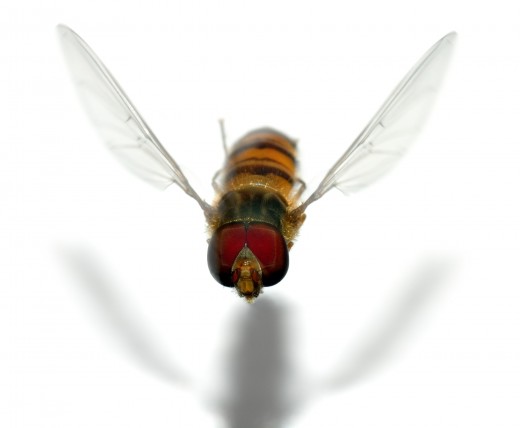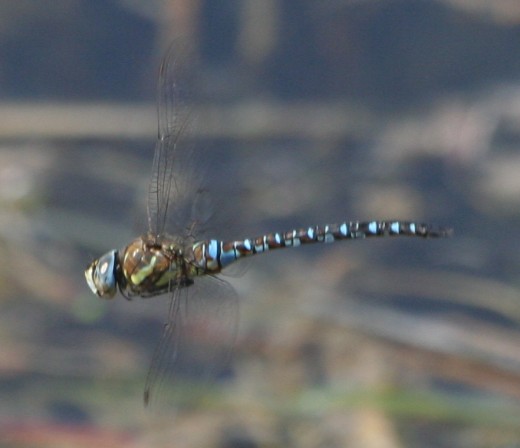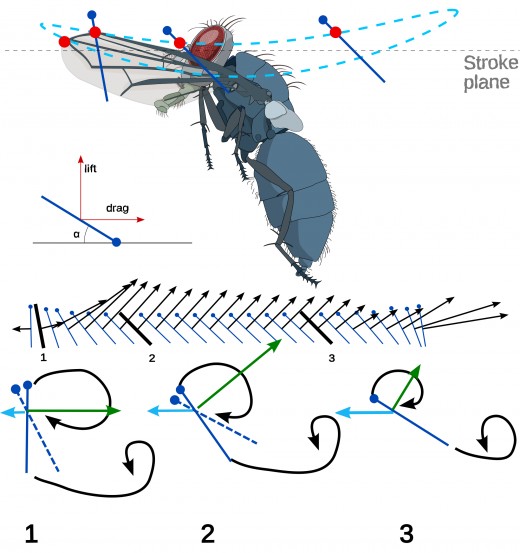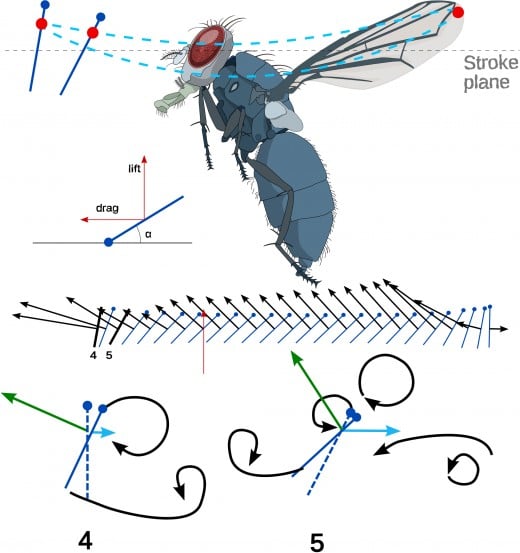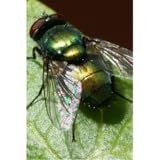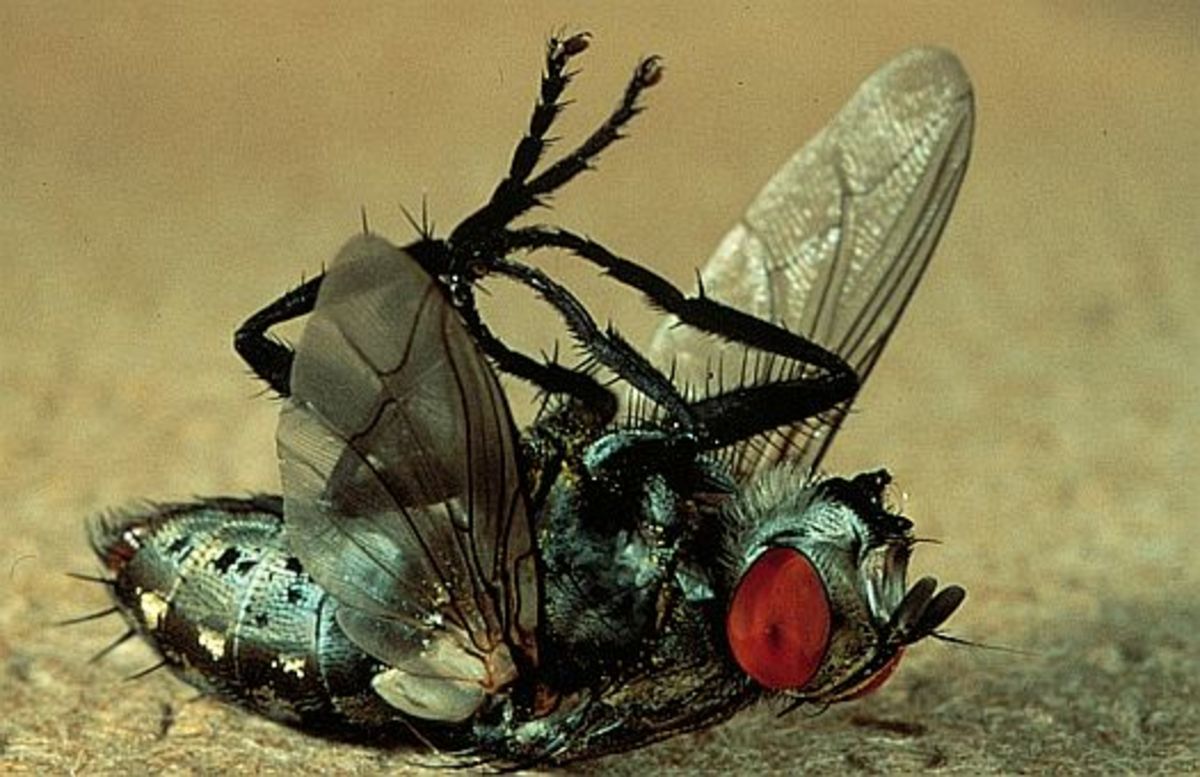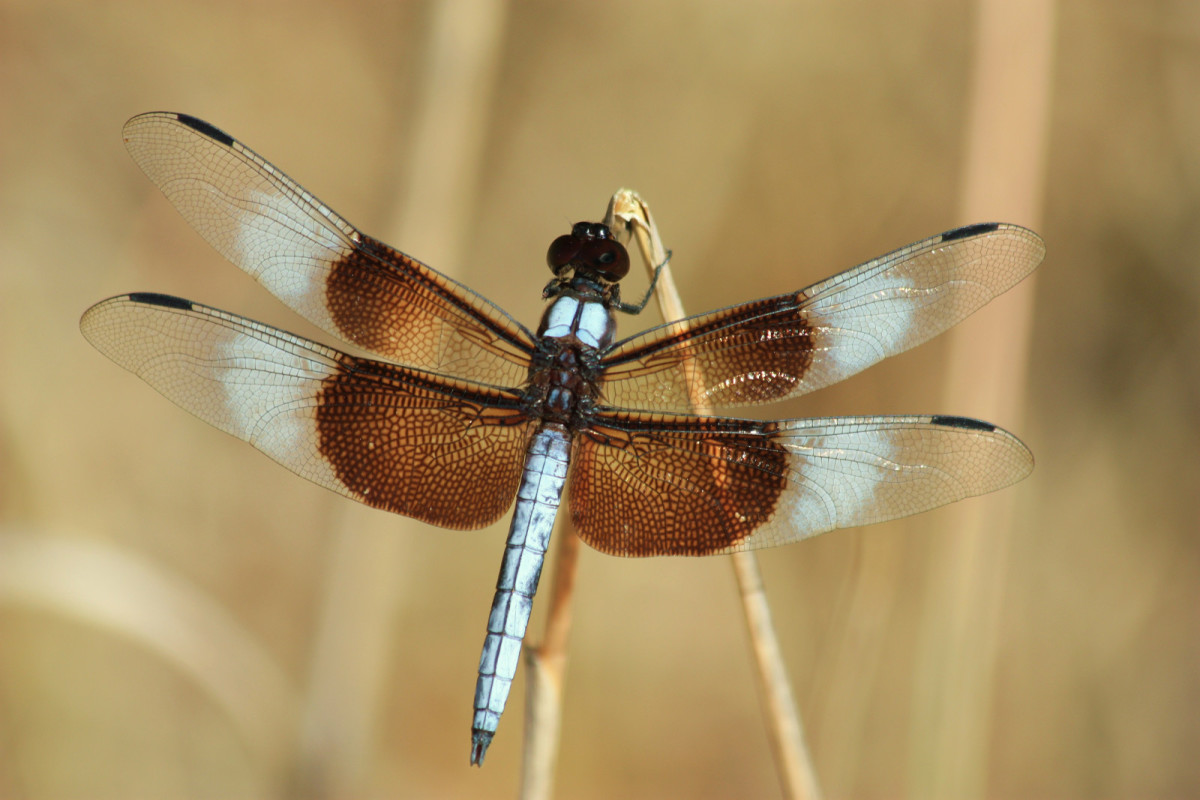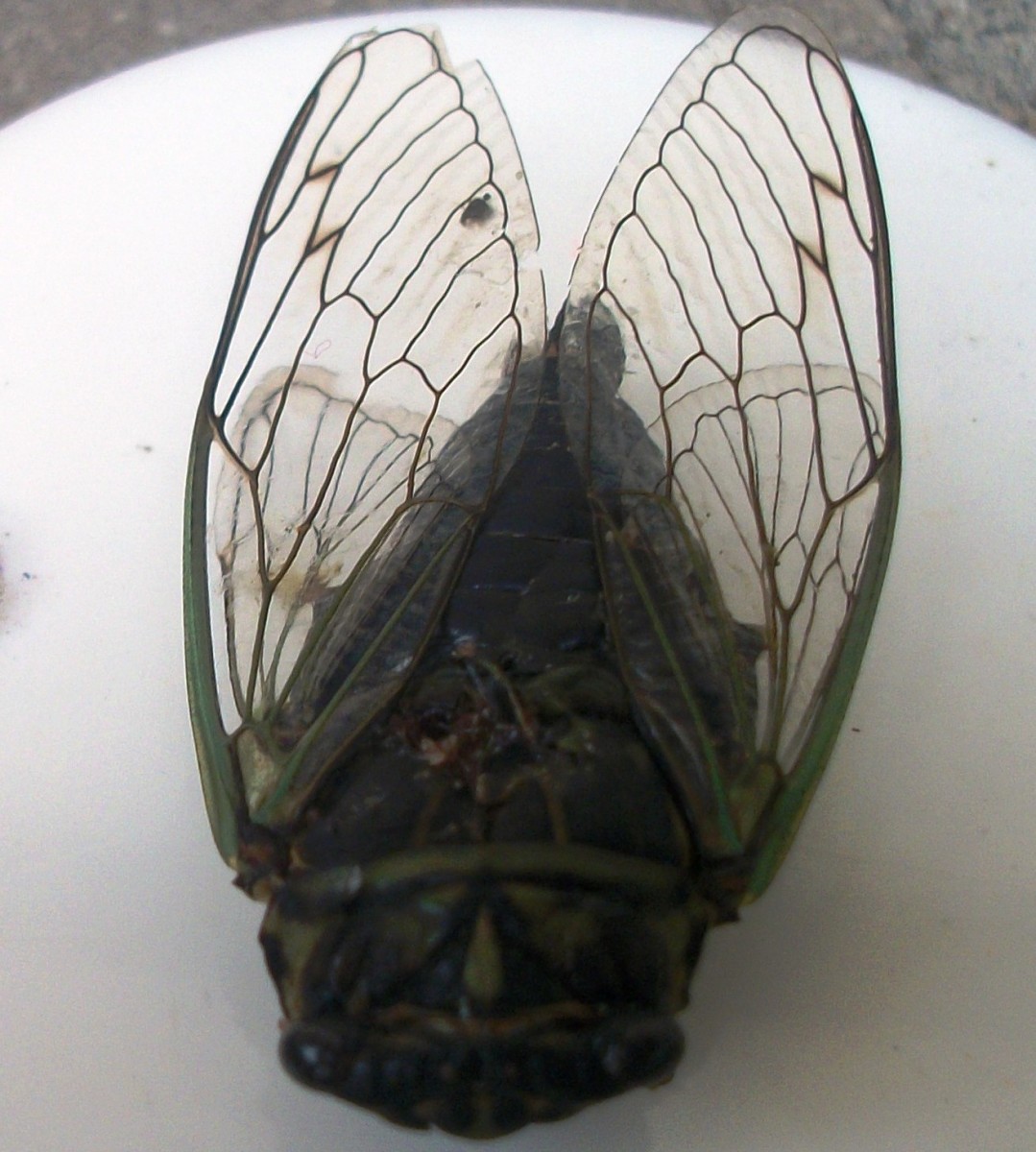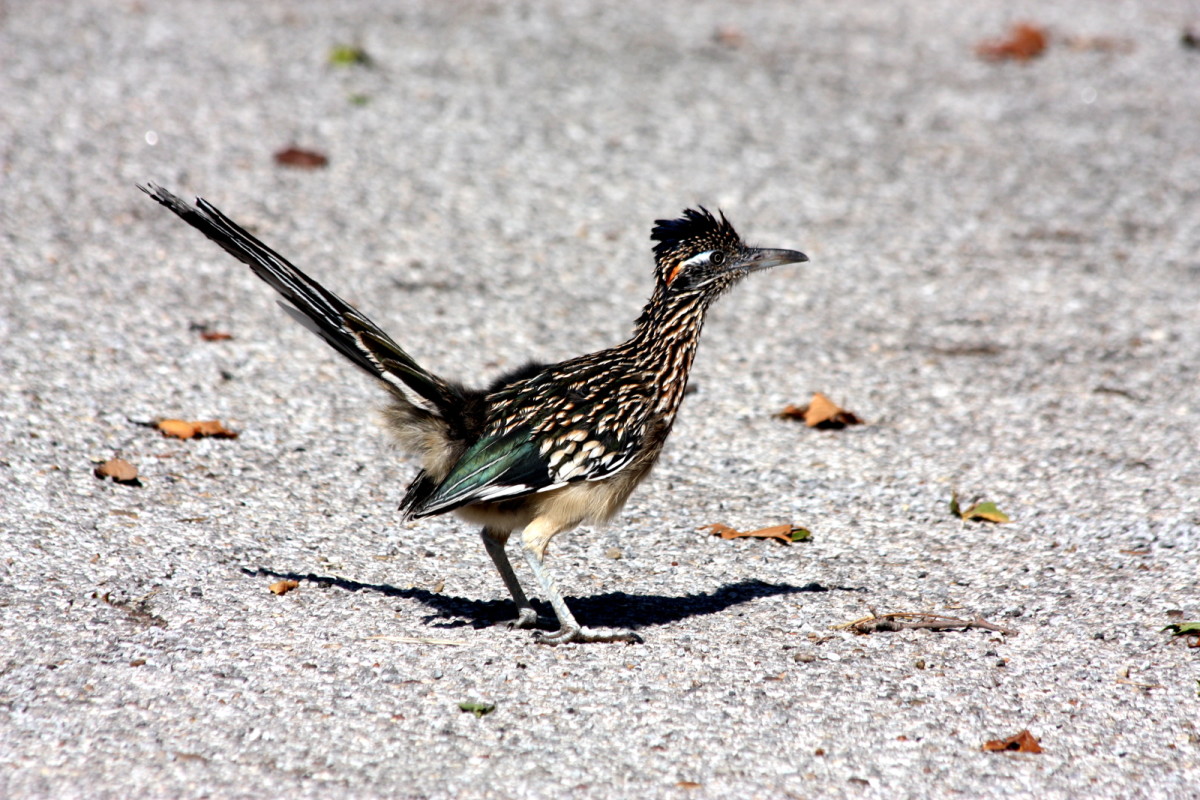How Flies Fly


What is all the Buzzing About?
Every summer outdoor barbeques are invariably disrupted by the annoying buzz of flies around your head, in your food and sometimes in your pre-dinner martini. If you live on a farm as we do, August seems to produce an unusually heavy population of these insects that find their way into the house, annoying occupants day and night. Flies, however, equally impress us with their aerial agility which makes them annoyingly difficult to eliminate with a flyswatter!
So what is all this buzzing about? Birds and airplanes use wings whose shape and angle create lower pressure, above compared to below the wing, resulting in lift. However, for smaller insects, the viscosity of the air would make bird-like flight akin to swimming in molasses. Efficient flying for smaller insects, like flies, requires them to flap their wings extremely fast - for the fruit fly this means moving their wings at a frequency of 220 Hz. In other words, their flight muscles contract and relax 200 times per second! This high speed muscle movements cause the typical annoying buzz of flies and other tiny winged insects.
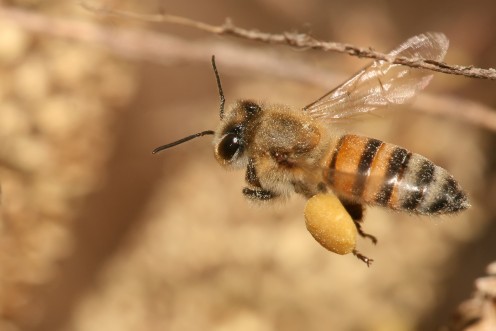
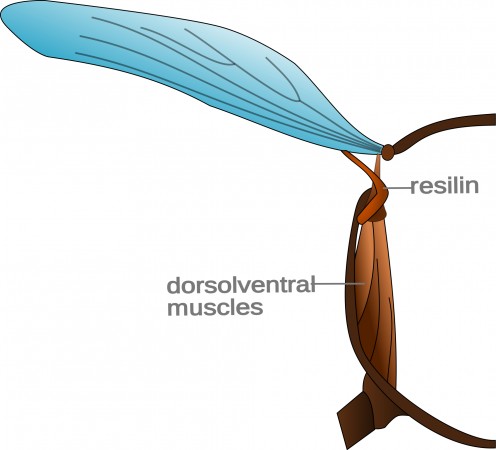
Components of Small Insect Wings
All body motion is controlled by the contraction and relaxation of muscle pairs. Flight muscles of flies are special. High velocity flapping of fly wings causes rapid acceleration and kinetic energy gain by the insect. Two components of the wing control flight in flies and other small insects. The first type (the dorsolventral muscle) moves the wings down and causes the stretching of the second component, resilin,which is a pad of elastic, rubber-like protein. During the wing upstroke, the resilin is stretched converting kinetic energy of the wing into potential energy in the resilin which is storing energy like a spring. When the wing moves down, this energy is released and helps the downstroke. The wings are then pulled up again starting the cycle over. Therefore, the flight of flies works by stretching an elastic power-storage device for every wing stroke. Energy is recaptured that would otherwise be wasted - at least ten percent of the energy used in each wing stroke is recaptured for use in the next wing stroke. Because flight is an extremely energy intensive activity, any recycled energy is beneficial for the fly.


Aerodynamic Mechanisms of Insect Flight
These stable wing oscillations also utilize three different aerodynamic mechanisms in order for small insects to stay in flight while also conserving their energy expenditure:
- delayed stall,
- rotational lift or backspin,
- wake capture
1. Delayed stall occurs in the middle of a wing stroke. As the wing is swept forward, a whirlpool of air is created on top of the wing creating a low pressure zone. This lift keeps the fly in the air.
2. Rotational lift occurs when the wing rotates backward pulling air over the top of the wing faster than at the bottom of the wing again creating lift. It is similar to that of putting a 'backspin' on a tennis ball. Therefore, the wing is pulled upward because of the lower pressure and the fly expends less of its own energy during flight.
3.The completion of the downstroke results in an incredible release of kinetic energy propelling the fly forward.
Wake capture occurs when the wing starts to change direction as the insect drives the wing upward.
4. As the wing moves through the air, it leaves whirlpools of air behind it.
5. The wing passes through this spinning vortex wake from the previous stroke. It can obtain enough energy from this wake to create more upward lift, again reducing the amount of its own energy reserves the fly needs to expend in flight.
Flies, like most small, winged insects are exceedingly fast and agile creatures. Annoying they may be at summer picnics and afternoons on the deck while you're enjoying a drink with friends but one can not help but appreciate the intricate design incorporating principles of physics and biology that makes flight possible for these tiny creatures. I know that after my research I have more appreciation for these little 'buggers'. But I will still keep that flyswatter handy next summer!
Some Links you May be Interested In!
Check out my other Hub About Annoying Yet Fascinating Insects
- How and Why Crickets Sing
To many, the summer evening chirping of crickets is musical, while to others, it is noise preventing blissful sleep. Whether one thinks of them as musical or annoying, one has to wonder how these tiny insects produce and project such a powerful song.

